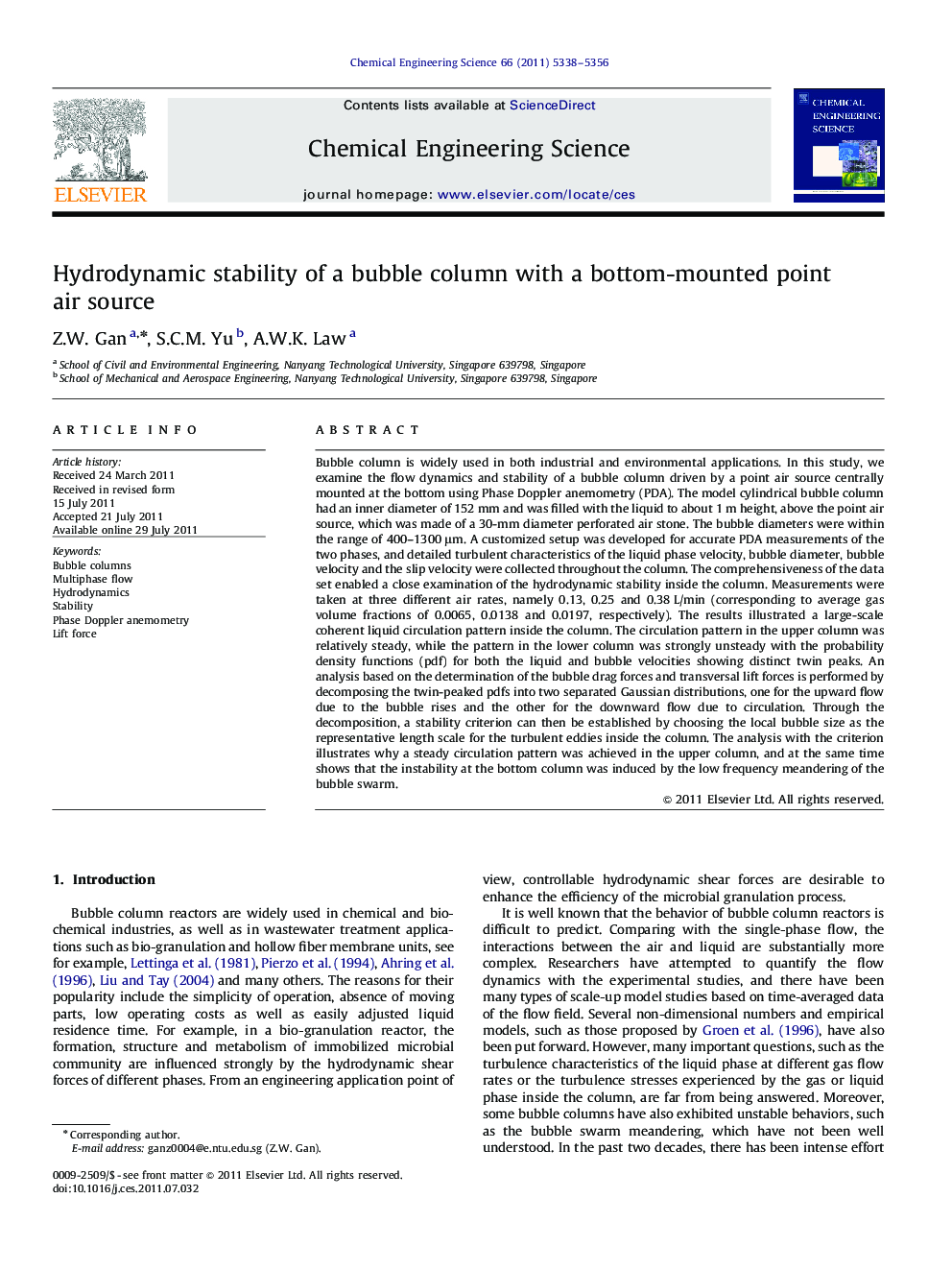| Article ID | Journal | Published Year | Pages | File Type |
|---|---|---|---|---|
| 156220 | Chemical Engineering Science | 2011 | 19 Pages |
Bubble column is widely used in both industrial and environmental applications. In this study, we examine the flow dynamics and stability of a bubble column driven by a point air source centrally mounted at the bottom using Phase Doppler anemometry (PDA). The model cylindrical bubble column had an inner diameter of 152 mm and was filled with the liquid to about 1 m height, above the point air source, which was made of a 30-mm diameter perforated air stone. The bubble diameters were within the range of 400–1300 μm. A customized setup was developed for accurate PDA measurements of the two phases, and detailed turbulent characteristics of the liquid phase velocity, bubble diameter, bubble velocity and the slip velocity were collected throughout the column. The comprehensiveness of the data set enabled a close examination of the hydrodynamic stability inside the column. Measurements were taken at three different air rates, namely 0.13, 0.25 and 0.38 L/min (corresponding to average gas volume fractions of 0.0065, 0.0138 and 0.0197, respectively). The results illustrated a large-scale coherent liquid circulation pattern inside the column. The circulation pattern in the upper column was relatively steady, while the pattern in the lower column was strongly unsteady with the probability density functions (pdf) for both the liquid and bubble velocities showing distinct twin peaks. An analysis based on the determination of the bubble drag forces and transversal lift forces is performed by decomposing the twin-peaked pdfs into two separated Gaussian distributions, one for the upward flow due to the bubble rises and the other for the downward flow due to circulation. Through the decomposition, a stability criterion can then be established by choosing the local bubble size as the representative length scale for the turbulent eddies inside the column. The analysis with the criterion illustrates why a steady circulation pattern was achieved in the upper column, and at the same time shows that the instability at the bottom column was induced by the low frequency meandering of the bubble swarm.
► Phase Doppler anemometry (PDA) was used to measure the flow field in a bubble column. ► The two-phase flow fields with three different gas fractions were investigated. ► The results revealed the detailed turbulent characteristics. ► A stability criterion was proposed based on the drag and the lift forces for bubble swarm. ► The criterion can predict the transition from an unsteady to a steady flow pattern.
